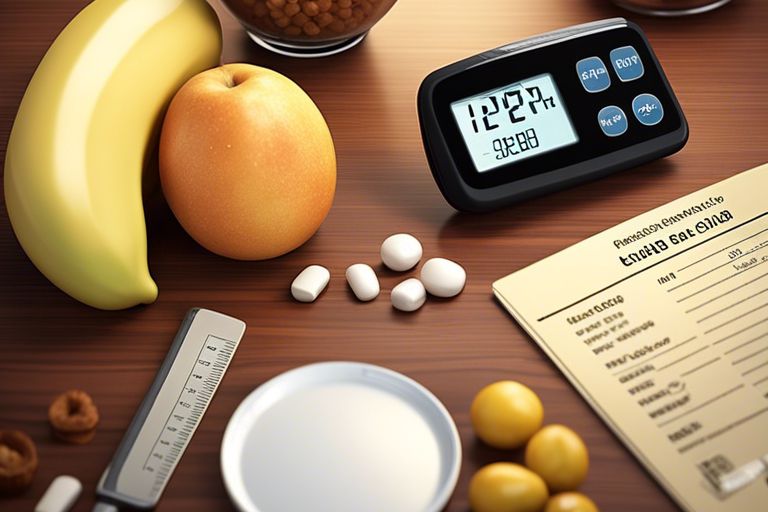Over the years, advancements in medical technology have made managing diabetes easier than ever. Insulin pumps have become a popular choice for many individuals with diabetes, offering convenience and precision in insulin delivery. However, with a variety of options available in the market, choosing the right insulin pump can be a daunting task. Let’s explore the world of insulin pumps and compare the features to help you make an informed decision on which one suits your lifestyle and medical needs best.
Picking Your Pump Partner: Features Unpacked
Convenience is Key: Size, Weight, and Wearability
For many individuals with diabetes, convenience is a top priority when choosing an insulin pump. The size, weight, and wearability of a pump can greatly impact day-to-day life. It’s necessary to consider how comfortably the pump can be worn, whether it be discreetly under clothing or more openly. The smaller and lighter the pump, the easier it is to integrate into your lifestyle without feeling weighed down.
Tech-Savvy T1D Care: Connectivity and Integration
The world of insulin pumps is becoming increasingly tech-savvy, offering features that can greatly enhance diabetes management. From Bluetooth connectivity to integration with continuous glucose monitoring systems, the options are vast. The ability to track your insulin delivery and blood glucose levels in real-time can revolutionise the way you manage your diabetes, providing valuable insights and peace of mind.
TechSavvy individuals can now take advantage of pumps that sync with smartphone apps, allowing for seamless data sharing and remote monitoring. This level of connectivity not only makes life easier but also ensures that you stay on top of your diabetes management wherever you are. Embrace the tech revolution and make your T1D care a breeze!
Reservoir Dogs: Understanding Insulin Capacity
The Volume Variety: From Minimalists to Maximalists
To understand which insulin pump suits you best, you need to grasp the capacity range. From the dainty ones for the minimalists who like to travel light to the behemoths for the maximalists who prefer not to refill often, there’s a reservoir size to cater to all preferences. Whether you’re a pinch-and-dash type or a more-is-more enthusiast, there’s an insulin capacity that will keep you on the go.
Refilling Rituals: Ease of Insulin Loading
To inject some ease into your insulin routine, consider the refilling rituals each pump demands. Some pumps make it a breeze to reload while others may require a bit more patience and precision. Insulin loading shouldn’t feel like a complicated chore – choose a pump that aligns with your refilling style.
Insulin refilling shouldn’t feel like a scene from a heist movie where every drop counts – go for a pump that simplifies the process and keeps your fingers grease-free.
Volume
Regarding insulin pump reservoirs, remember: size does matter. Whether you’re a dab-hand at carb counting or more of a ballpark figure kind of person, finding the right volume is key to keeping your glucose levels in check. Don’t let your reservoir run dry when you could have the perfect size to keep you cruising along smoothly.
Power to the Patient: Battery Life and Energy Efficiency
The Longest Last: Rechargeable vs. Disposable
Power to the patient! Pertaining to insulin pumps, the debate between rechargeable and disposable options can spark a power struggle. Rechargeable pumps often offer longer battery life, ensuring that you can stay powered up for longer durations without worrying about running out of juice. They are the marathon runners in the battery life race.
The Back-Up Plan: Coping with Power Pitfalls
Disposable batteries might seem like the sidekick in the power game, but they can be your trusty back-up plan in times of need. Imagine your rechargeable pump running out of battery at the most inconvenient moment – that’s when your disposable battery-powered pump comes to the rescue, like a superhero with a spare cape. With disposables, you’ve got a safety net for those unexpected power pitfalls.
To power or not to power, that is the question…that we’ve got the answer to! Pertaining to insulin pumps, understanding the battery life options and preparing for power pitfalls can keep you one step ahead in your diabetes management journey. Whether you choose rechargeable for the long haul or keep disposables as your trusty sidekick, knowing your options gives you the power to make the best decision for your diabetes care.
Pumping the Brakes: Safety and Alarms
Your insulin pump not only delivers life-saving medication but also acts as your guardian angel, watching over you with error detection and alerts.
Guardian Angels: Error Detection and Alerts
Alarms on your insulin pump are like your personal bodyguards, always on alert to warn you of potential issues or malfunctions. These safety features ensure that you can trust your pump to keep you in good health.
Waterproof or Water Resistant? Immersion Confusion
Water, water everywhere, but is your insulin pump really protected? Understanding whether your device is waterproof or water resistant is crucial in avoiding an immersion confusion calamity.
This
This is where reading the fine print can save you from a soggy situation. Recall, not all pumps are created equal when it comes to water resistance, so be sure to know the limits of your device before taking the plunge.
The Price is Right: Considering Costs
Sticker Shock: Pump Price Tags
Many are often surprised by the initial cost of insulin pumps. The price tag can indeed cause a bit of sticker shock for some. It’s necessary to remember that this is a long-term investment in your health, and the benefits often outweigh the initial expense.
The Long Run: Maintenance and Supplies
To research into the long-term costs of insulin pumps, we need to look beyond the initial purchase price. Pricey maintenance and supplies can add up over time. However, the convenience and improved management of your diabetes that comes with a pump often make the cost worth it.
Price is just one aspect to consider when choosing the right insulin pump for you. It’s crucial to factor in ongoing maintenance, supplies, and support costs to make an informed decision that fits both your health needs and budget.
Summing up
Considering all points, choosing the right insulin pump is crucial for managing diabetes effectively. Each pump has its unique features, pros, and cons, so it’s crucial to weigh them carefully before making a decision. Be mindful of, it’s not just about the bells and whistles; it’s about finding the one that suits your lifestyle, preferences, and budget. Whether you opt for the Omnipod’s tubeless design, Medtronic’s continuous glucose monitoring system, or Tandem’s touchscreen interface, make sure it complements your needs and makes life with diabetes a little bit easier. So, choose wisely, dear pump seeker, and may your blood sugars be ever in your favour!




